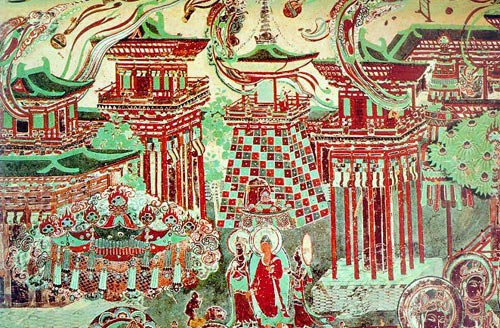
Sun Zhijun, Deputy Director of Digital Center of Dunhuang Academy, said, "Our present goal is to finish the digitalization of murals in one hundred and seventy Class-A caves in four to five years. Our long-term goal is to realize a complete digital record of every single cave of the entire Mogao grottoes."
The Dunhuang Academy is solely authorized by the Chinese government as the official institute in charge of the protection, research, and management of treasures in the caves. Most people here have devoted all their energy and wisdom to the historical site.”
Fan Jinshi arrived as a graduate student in 1963. At 70, she’s still here, working as hard as ever. She's seen a lot of changes.
Fan said, "Soon after the founding of People’s Republic, China launched a project to reinforce the mud walls of the caves. Premier Zhou Enlai approved it in 1962, a time when conditions were hard for the country. Premier Zhou authorized more than a million yuan, which might be equivalent to a hundred million yuan today."
Over the years, conservation awareness has improved, bringing more efforts as well as cooperation with international partners, such as the Getty Conservation Institute in the US.
Fan said, "Now we've entered a golden age for the protection of the Dunhuang Caves. Specifically, it turns from a passive method focusing on salvaging to one that is active, complete, and scientific, which includes daily maintenance and management."
The Mogao Caves represent a timeline of Buddhist art in China, an encyclopedic archive of styles and ideas, of dashes forward and retreats to the past. And the Dunhuang Academy is determined to keep ancient magic alive for centuries to come.